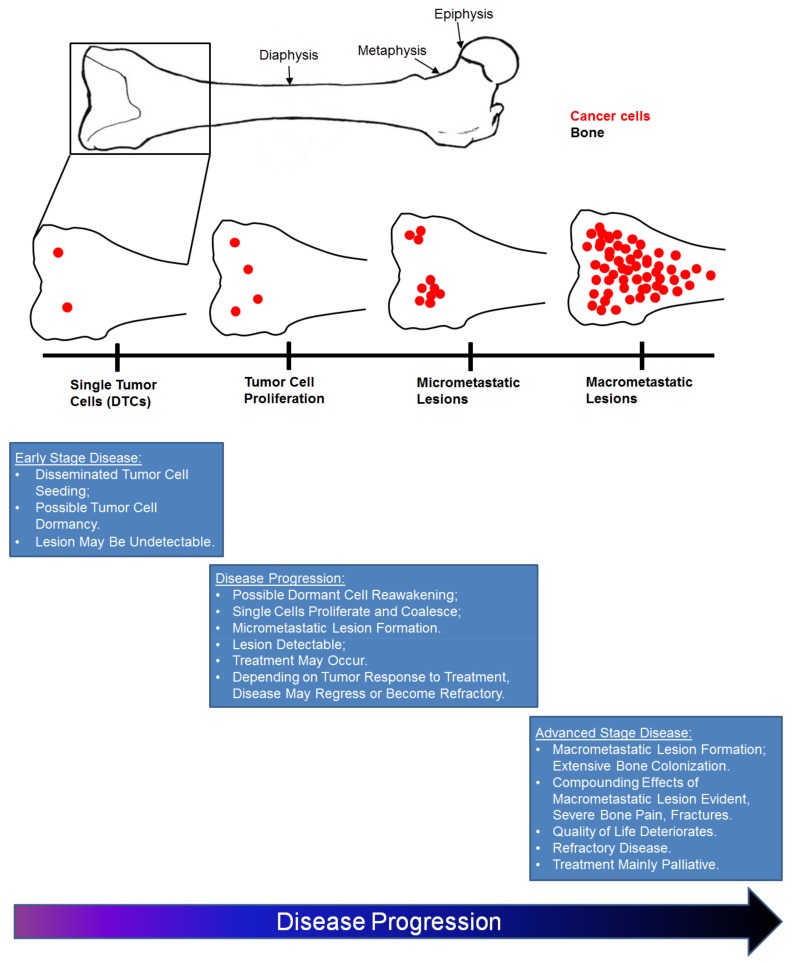Figure 3.
Stages of disease progression during bone metastatic cancer. Bone metastatic cancers may be broadly defined by three overarching stages: early disease, disease progression, and advanced or late stage disease. During early stage disease, disseminated tumor cells circulating in the vasculature enter bone and seed mainly as single cells. Cells may be undetectable by current technological methods due to their solitary nature. Cancer cell dormancy may also occur. As bone metastatic disease progresses over a period of months to years to potentially decades, dormant cancer cells become re-awakened leading to proliferation and coalescing of smaller, micrometastatic lesions. Lesions may become detectable by current technological methods. Treatments to reduce tumor size and alter bone remodeling may occur. Over time, tumors may become refractory to treatment modalities, leading to sustained tumor cell proliferation and excessive tumor burden. Macrometastatic lesions form. Patients may experience effects of increased tumor burden including severe bone pain, fractures, and hypercalcemia. Patient quality of life progressively deteriorates. Treatment modalities during advanced stage disease are mainly palliative to reduce complications from excessive bone tumor burden.

